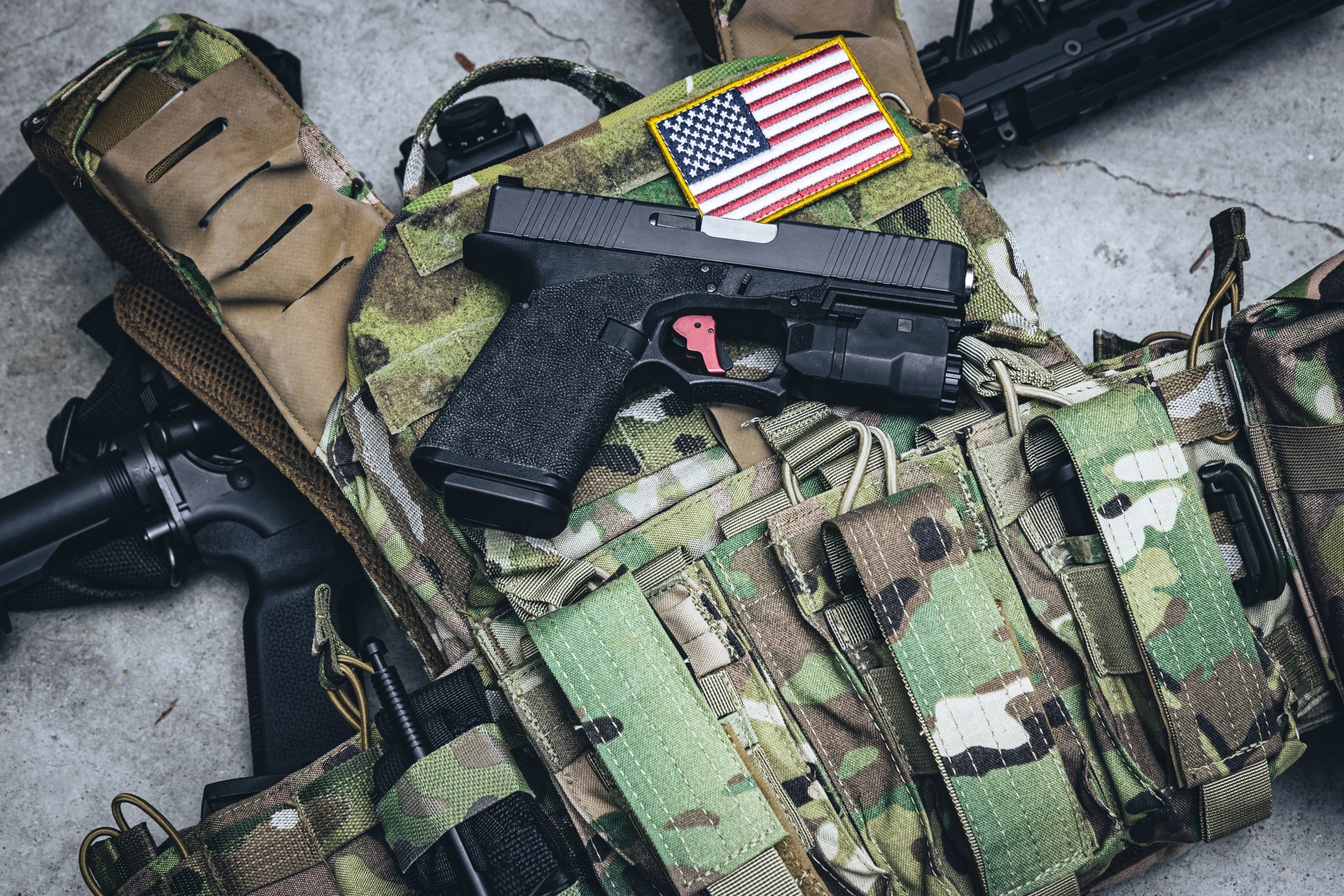Defense & Law Enforcement
Transforming Advanced Materials through Laser Precision
In the realm of defense and law enforcement, where lives depend on the quality and performance of equipment, new advances in materials science and manufacturing are driving a revolution. Fabrics and composites that were once deemed futuristic are now finding their way into the hands of soldiers and police officers, offering superior protection, enhanced capabilities, and unmatched durability. From custom nylon laminates to the remarkable Hypalon, these hightech materials possess qualities unlike anything seen before.
To turn these cutting-edge materials into mission-ready gear, specialized manufacturing techniques are essential. This is where companies like SawGrass excel. They are not just manufacturers—they are pioneers, developing customized processes to handle and shape those materials that are redefining the very concept of tactical and protective equipment. At the heart of these innovative manufacturing solutions is the transformative power of laser technology.
Laser Technology: The Precision Shaper of the Future
Harnessing the power and precision of lasers lies at the core of the new manufacturing processes for these advanced materials. Traditional manufacturing methods like die-cutting have limitations when dealing with the complexity and resilience of materials like Tegris and custom laminates. Lasers offer several critical advantages:
Precision and Intricacy:
Lasers can cut with a level of detail that far surpasses mechanical methods. This opens a world of possibilities for creating complex shapes and components within tactical gear, ensuring unwavering performance and comfort.
Adaptability:
Materials are evolving rapidly, and laser manufacturing processes are exceptionally adaptable compared to traditional techniques. If a new high-performance composite emerges, laser manufacturing systems can swiftly be adjusted to handle the unique properties of that material without large equipment overhauls.
Reduced Waste:
The utilization of laser cutting technology brings forth an exceptional degree of precision and efficiency in material usage. This meticulous approach significantly minimizes waste, thereby promoting a more sustainable manufacturing process for advanced gear. This heightened efficiency not only aligns with environmental consciousness but also contributes to reduced production costs, a critical factor when outfitting large forces or responding to urgent needs without compromising the quality of the equipment.
Speed and Automation:
Lasers, renowned for their inherent precision and speed, can be seamlessly integrated into highly automated manufacturing systems. This integration unlocks a multitude of benefits, including a substantial increase in production output and unwavering consistency in the quality of the final product. This level of automation is of paramount importance, especially in scenarios where the demand for protective equipment experiences a rapid surge, such as during natural disasters, global health crises, or other unforeseen emergencies. By leveraging laser-driven automation, manufacturers gain the ability to swiftly ramp up production to meet these urgent demands, ensuring that essential gear reaches those in need in a timely and efficient manner.
Beyond Cutting: Lasers as Versatile Tools
The transformative role of lasers in manufacturing equipment for extreme environments extends far beyond the simple act of cutting materials. These powerful beams of light have become indispensable tools, unlocking a wealth of possibilities that revolutionize the way we design, fabricate, and customize gear for the harshest conditions.
Welding and Bonding:
Lasers have proven to be game-changers. Laser welding and bonding techniques enable the creation of incredibly strong, often seamless, connections between layers of advanced materials. By eliminating the vulnerabilities inherent in traditional stitched or riveted seams, equipment crafted with these laser-enabled methods boasts exceptional robustness and longevity, critical factors in environments where failure is not an option.
Material Surface Treatments:
Lasers offer an unparalleled level of control in material surface treatments. By precisely manipulating the surface properties of materials on a microscopic level, lasers can create textures that enhance abrasion resistance, repel water, or even impart unique camouflage properties. This level of customization empowers engineers to fine-tune the performance and functionality of equipment to meet the specific challenges posed by extreme environments.
Marking and Engraving:
We have revolutionized the way we mark and engrave gear for identification and customization purposes. Whether it's permanently etching logos, unit numbers, barcodes, or other vital data, lasers offer unmatched precision and detail. This capability ensures that equipment can be easily tracked, identified, and personalized, even in the most demanding conditions.
Lasers have transcended their role as mere cutting tools to become versatile instruments that redefine the boundaries of what is possible in manufacturing equipment for extreme environments. Through welding, bonding, surface treatments, and marking, lasers empower engineers to create gear that is not only more durable and functional but also uniquely tailored to the demands of the most challenging conditions on Earth and beyond. As technology continues to advance, we can expect lasers to play an even more pivotal role in shaping the future of equipment designed to withstand the harshest environments imaginable.

Laser-Cut MOLLE Gear: Precision, Performance, and Beyond
A tactical equipment manufacturer, specializing in gear for specialized military and law enforcement units, sought a solution to overcome the limitations of their traditional
Contact a Specialist
Other Industries





